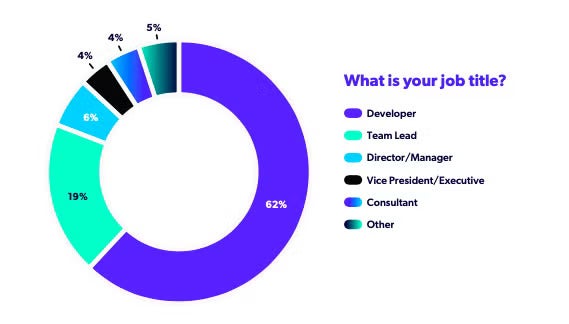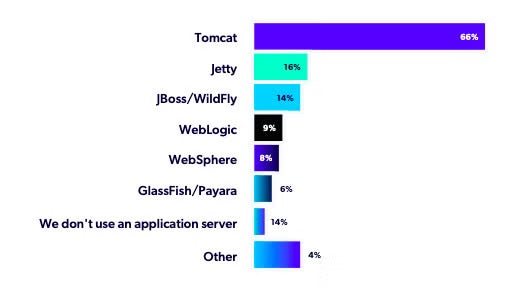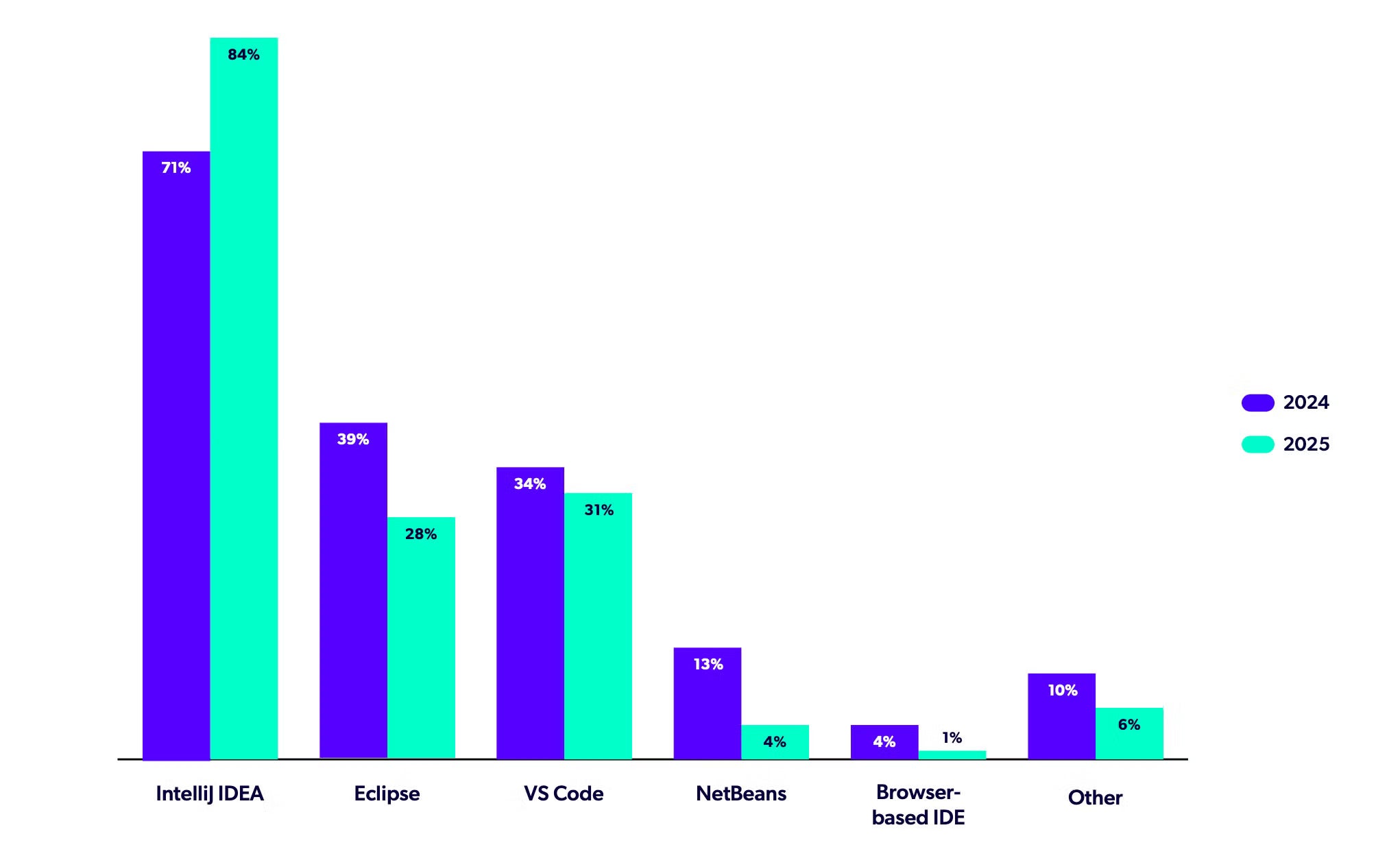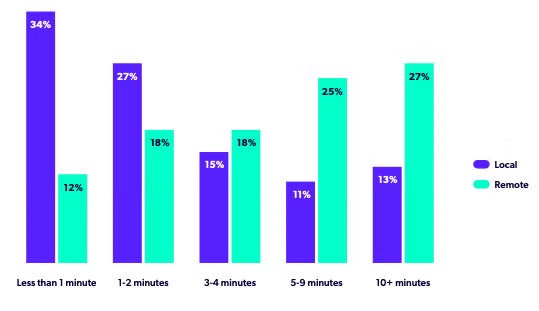Blog
May 14, 2025
The 2025 Java Developer Productivity Report is here. It’s loaded with stats about the challenges Java developers are facing—and the tools and technologies they’re using to solve them. But amid the stats there’s also some key trends that warrant a broader discussion.
So to facilitate that discussion, I hosted a webinar on the state of Java development productivity in 2025 with my colleague Jeff Michael. Read on for an in-depth discussion of key Java trends for 2025, including:
Learn More in This Java Webinar
Want to learn more about these trends? Watch the full discussion below.
About the 2025 Java Developer Productivity Report
Each year, I have the distinct pleasure of compiling JRebel’s annual Java Developer Productivity Report, and I can safely say that this year’s report is the most thorough and insightful edition yet. The beauty of the 2025 Java Developer Productivity Report is that is captures the voice of developers and what the hands on the keyboard are doing.
We surveyed 731 Java users for the 2025 Java Developer Productivity Report. While the majority (62%) classified their role as Java developers. This year’s survey also saw an increase in responses from individuals in leadership roles, with 19% saying their role is team lead, 6% as director/manager, and 4% saying their role is vice president or executive. These stats are important because the survey has always been—and will continue to be—geared toward the boots on the ground in Java development.

Source: 2025 Java Developer Productivity Report
Diving deeper into the demographics, 29% of respondents were from Enterprise companies with 1,000+ employees, 22% were from mid-sized companies with 100 – 1,000 employees, 14% were from small companies with 20-100 employees, 18% were from startups with less than 20 employees, and 17% were contractors or freelancers. The majority (29%) were from development teams of 3 to 9 developers, with teams of 10-20 developers trailing slightly behind at 25%.
Get More Java Development Stats Like These
Want to dive into the data? Download your copy of the 2025 Java Developer Productivity Report today.
Java Tech Stack Adoption
When we look at what Java developers are using in their tech stack, a lot has changed — and a lot hasn't. Read on for insights on the state of the Java tech stack in 2025.
Apache Tomcat Is Still on Top
I first deployed an application on Apache Tomcat in the mid 1990s, so it's pretty incredible to see that 66% of Java users* are still turning to Apache Tomcat as their Java application server of choice today over alternatives like Jetty and JBoss / Wildfly. This longevity can be attributed to the fact that Apache Tomcat is relatively light weight, yet still sufficient for most Java development tasks.

Source: 2025 Java Developer Productivity Report
IDE Preferences are Shifting
Not everything is the same in the Java tech landscape, however. While IntelliJ IDEA is still the most popular Java IDE, this year marked the first time that VS Code overtook Eclipse for the second position.

Source: 2025 Java Developer Productivity Report
Unlike IntelliJ IDEA and Eclipse, VS Code gives Java developers everything they need and nothing they don't, all wrapped in an open-source IDE supported by Microsoft. VS Code also offers countless VS Code extensions (aka plugins), including the VS Code Extension for JRebel.
Back to topLTS Is More Important Than Ever
Perhaps the biggest shift noted in the 2025 Java Developer Productivity Report is a wholesale move from older JDK versions such as Java 8 and Java 11, to JDK versions for which Oracle currently offers long-term support (LTS). Those LTS versions are currently Java 17 and Java 21, with Java 25 coming out later in 2025. This is likely a continued response to a revised LTS cadence from Oracle.
Moreover, a dropoff in the number of developers using alternative Java distributions like Groovy, Kotlin, and Scala may indicate that Java developers are moving back to the basics as the Java ecosystem is maturing.
Back to topCloud Development Environments Come With Complexity
We’re seeing some definitive trends around cloud and remote development environments. No matter if you’re a large or small organization, cloud development has arrived. More importantly, companies are maturing their processes and tools to best align with this shift toward cloud development.

Source: 2025 Java Developer Productivity Report
One downside to cloud development is redeploy times. For many organizations, redeploys in local development environments are 2 minutes or less. That flips in cloud development environments, where 52% are 5+ minutes. That’s a massive inefficiency where developers are waiting 5 or even 10 minutes for a single redeploy. As a result, we’re seeing more and more customers identify inefficiencies around cloud development environments and actively look to address them.
Final Thoughts
Whatever methods you use to encourage Java development productivity, it's critical that you keep up your efforts until you find tools and methods that work for your team. Is your team testing and trialing Java productivity tools for broader implementation? Add JRebel to your list.
See how much time you can save during your 14-day free trial of JRebel.
